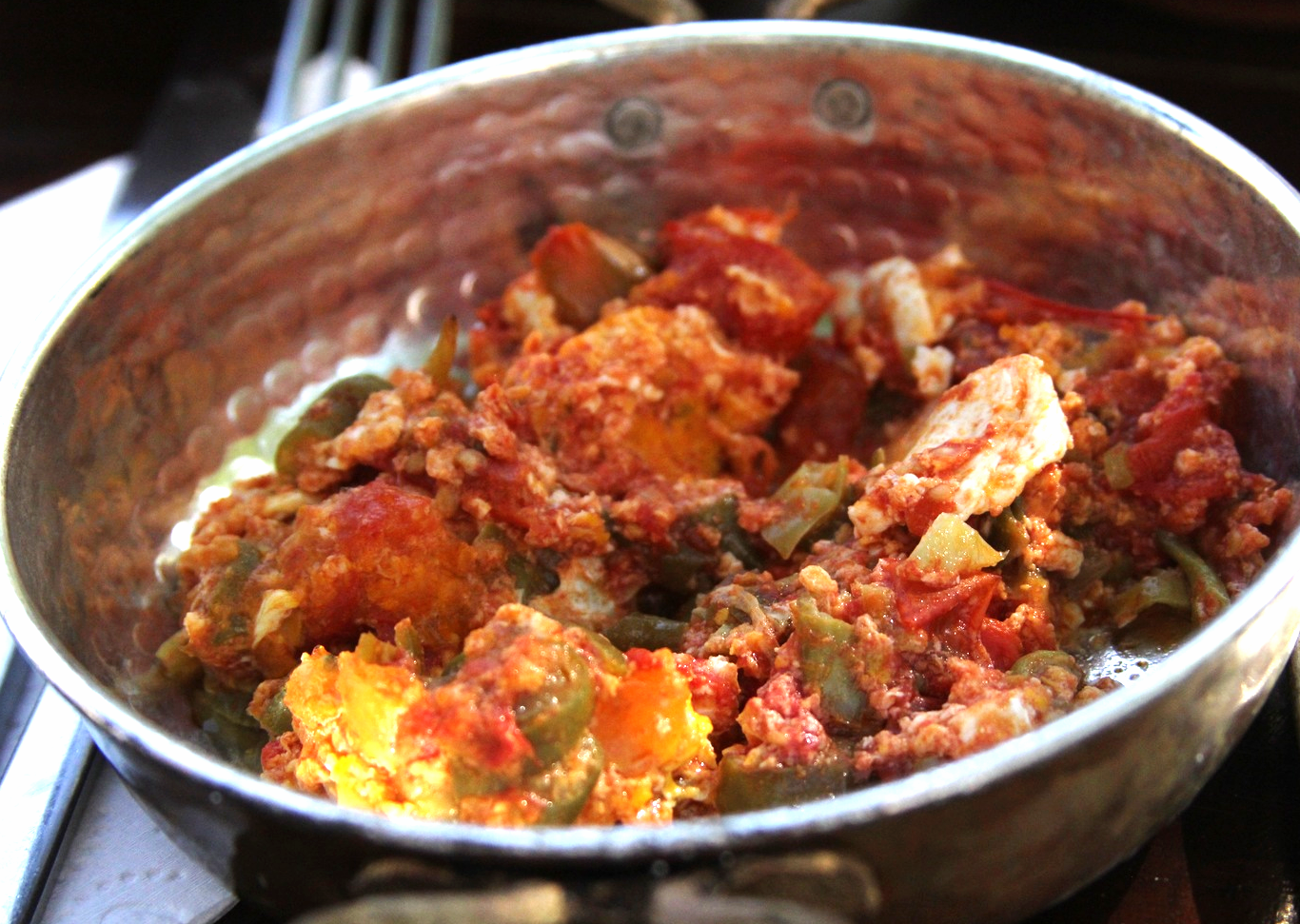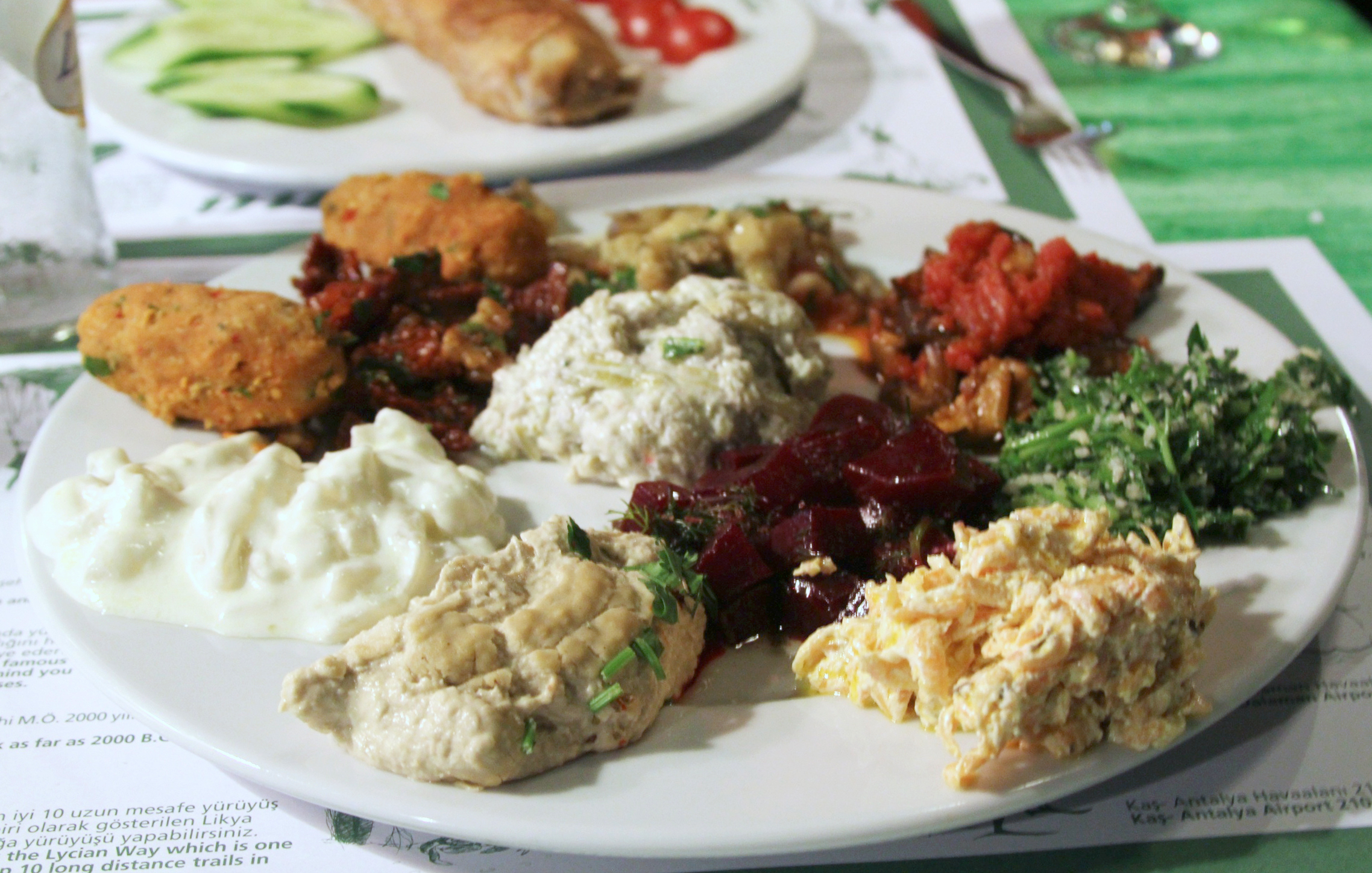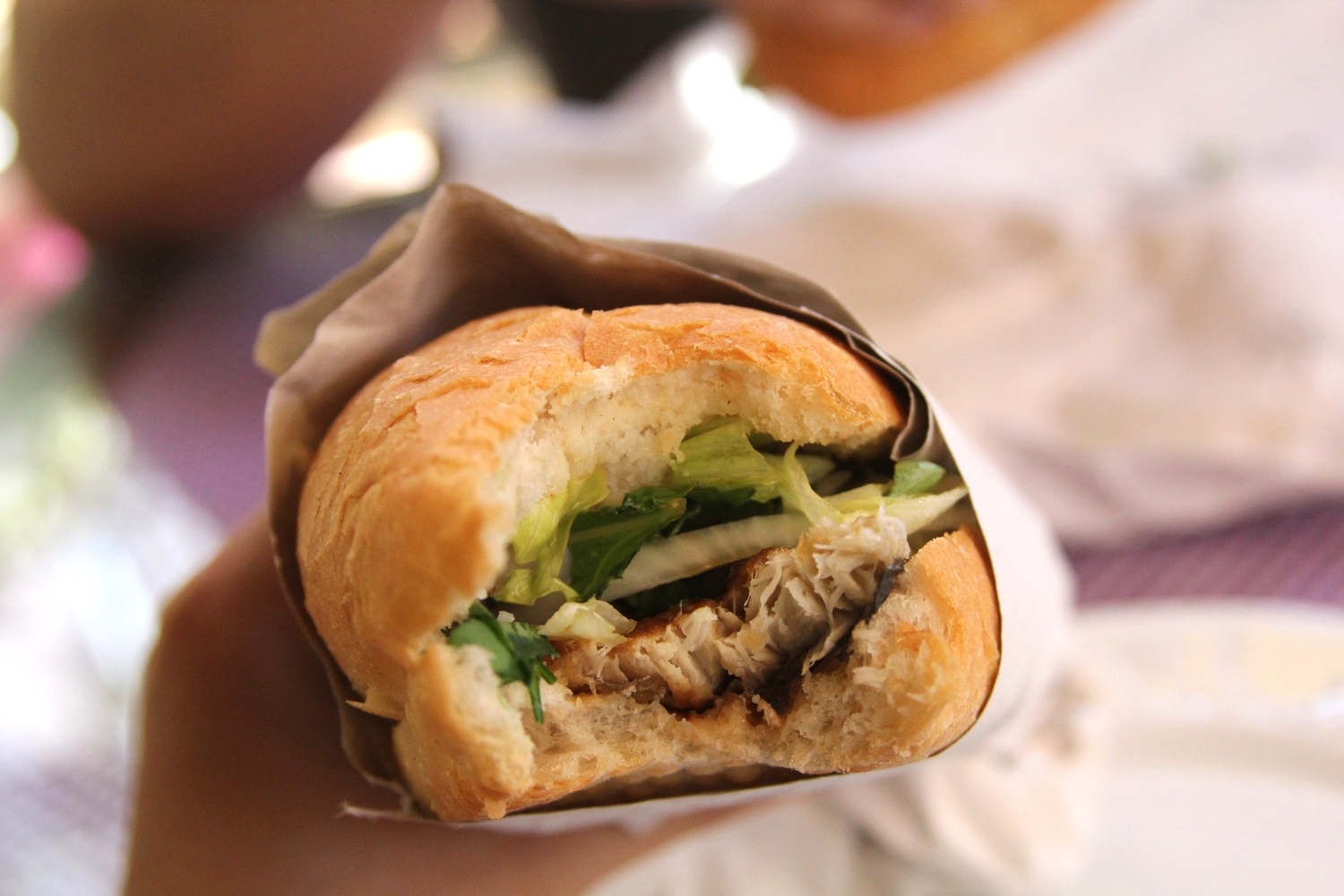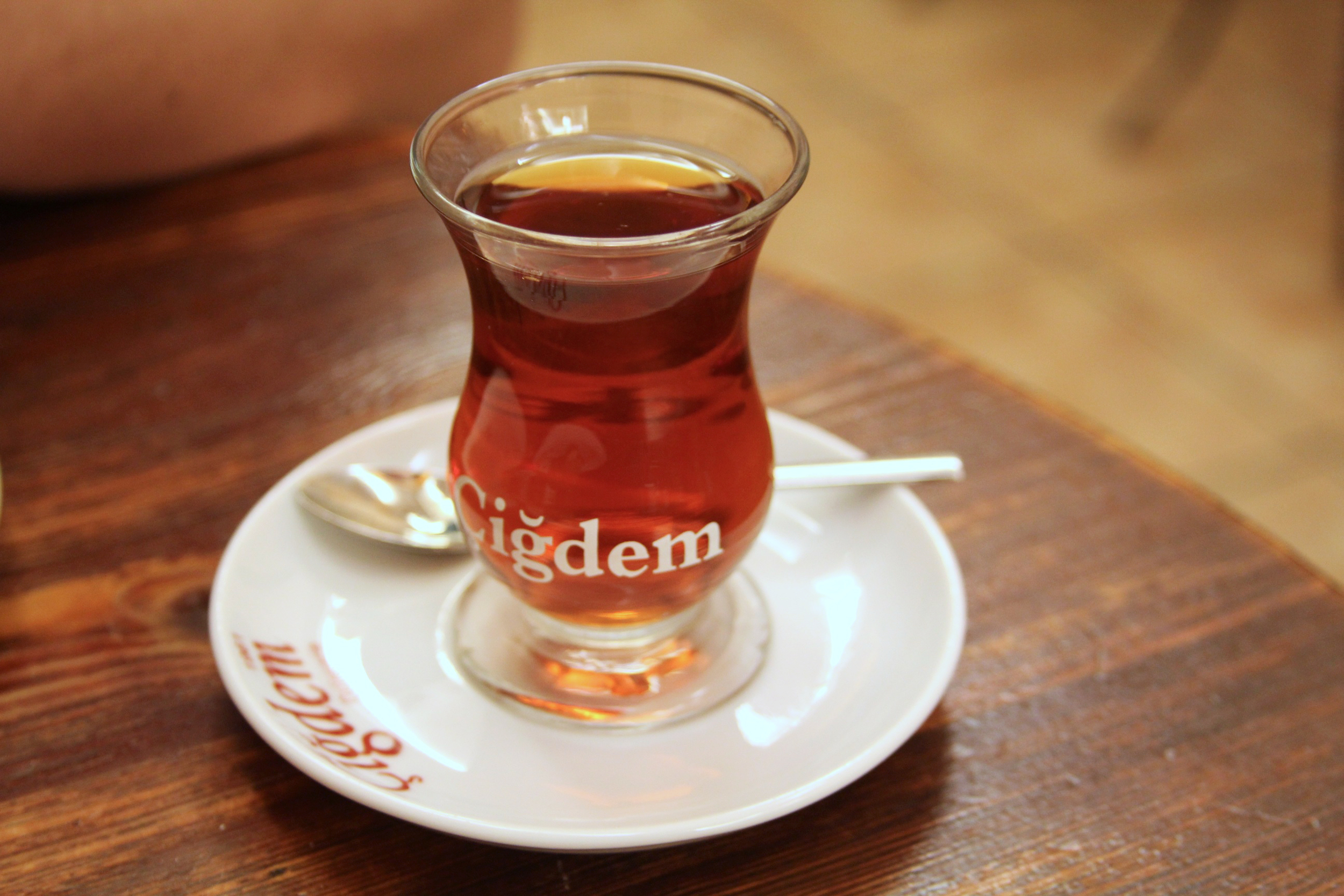This is part 1 of a 5-part series about my recent trip to Turkey.
It's been a few weeks since I returned from my visit to Turkey, but the food that I ate there is still seared into my memory. Consider the deep roots of both Asian and European cuisines, then cross-pollinate them — that's what eating in Turkey is like.
As I traveled throughout the country, I discovered that many of the dishes were highly regional, and I'm sure I've just barely scratched the surface in my eating expeditions. But here's a sampling of iconic foods you'll likely encounter if you travel there.
Turkish breakfast
A Turkish breakfast will be reason alone for you to get out of bed in the morning; it's a full spread that offers a little bit of everything. No matter how shitty your hotel is, you're sure to be delighted in the morning with an assortment of sweet and savory provisions. At minimum, breakfast will entail bread, tomatoes, butter, honey, jam, olives, cheese, and some form of eggs. You'll often find yogurt, cucumbers, peppers, fresh fruit, bologna or frankfurters, bagel-like simit, pastries, and cake, too.
Eggs are big morning fare in Turkey, and you'll see them at breakfast hard-boiled, hard-scrambled, and fried over-easy. But they put their best foot forward in the dish called menemen, a mess of eggs scrambled gently with tomatoes, green peppers, and olive oil. The version above was particularly wonderful thanks to the addition of a feta-like Turkish cheese known as beyaz peynir.
Another common breakfast food is börek, a family of baked or deep-fried pastries that you might recognize if you've ever eaten food from Eastern Europe, Greece, Israel, or Northern Africa. (Check out my friend Camilla's ridiculous-looking meat-filled Slovenian burek.) But börek actually has its origins in the Ottoman Empire, and is still ubiquitous today. Some of the most popular are ispinak börek (filled with spinach and beyaz peynir — my favorite), sigara börek (shaped like cigars, and filled with various things), and su böreği, which are multilayered with cheese, and cut into squares like lasagna. Check out the cross-section of my favorite ispinak börek from the trip. Just count those flaky layers, I beg of you!
Meats
Turks absolutely love their meat. Two common categories of meat dishes are köfte (meatballs) and kebap (roasted meats). Unlike the singular, dish of round, tomatoey meatballs we have in America, there are hundreds of different types of meatballs in Turkey. Köfte (roughly pronounced "KOOF-tuh") might be cooked or raw, made with beef or lamb, just ground meat or mixed with fillings like grains and vegetables. Walk into any basic köftecisi (meatball shop) and the plate above is typical of what you'll get: ground meat, shaped into oblong pellets, served with pickled peppers and a red pepper paste on the side. I like to wash all that heat down with a buttermilk-like yogurt drink called ayran.
There's even more selection to choose from when it comes to kebap, or roasted meats. Sure, you'll see şiş kebap, a.k.a. shish kebab, which is just roasted or grilled cubes of meat (like the chicken version above). But then there's meat that's been minced and hand-shaped onto skewers (adana), ground meat that's skewered and wrapped in lavash (beyti), sliced meat roasted on a vertical spit (döner), meat that's cooked in a clay pot with vegetables (testi kebap).
If you worry about missing pizza in Turkey, fear not. They have something similar and equally delightful: pide (pronounced "PEE-duh"). They're footlong, football-shaped flatbreads topped with melted cheese, vegetables, and meat toppings, then baked in a brick oven, and they're abundantly and cheaply available at street carts and restaurants everywhere.
One of my favorite dishes from the trip was lahmacun ("LAH-mah-joon"), a thin, air-pocketed, crispy-crusted flatbread that hails from Gaziantep, a town near the Turkey's Syrian border. It's topped with minced beef, peppers, tomatoes, and herbs before a short visit to a brick or stone oven. It's light yet deeply satisfying at the same time — something I could eat every day.
Meze
Meze — small dishes — are another hugely popular food category throughout Turkey. You can eat them for any occasion: alongside meat or fish, as an appetizer before the main event, or as a meal in its entirety. In Turkey, meze platters often contain things Americans would easily recognize — olives, hummus, stuffed grape leaves, strained yogurt, cheese — but they also just as many you haven't seen before (lentil croquettes, carrots with yogurt and garlic, spicy pickled beets. If you eat meze for a meal in the evening, be sure to wash it down with plenty of rakı ("RAH-kuh"), Turkey's famous anise-scented apéritif.
This dish, a mixture of tomatoes, cucumbers, green peppers, and onions known as shepherd's salad, is everywhere. Think of it as the house salad of Turkey. It's dressed with nothing but a little lemon juice, olive oil, and salt.
Eat piyaz, or bean salad, as a meze when you order meatballs.
Fish
Fish is another huge component of Turkish cuisine, and sadly, I didn't photograph enough of it. But one dish I particularly enjoyed was the simple, clean balık ekmek ("bah-LUK EK-mek"), or fish sandwich. I spotted them everywhere from waterside on the Galata Bridge to along the alleyways of coastal towns. The premise is ridiculously elemental: take a seasoned fresh fish (mackerel and whiting are popular), pan- or deep-fry it, then drop it into a split torpedo roll with romaine and thinly shaved onion. Add a squirt of lemon; devour.
Dessert, coffee, and tea
One can't really talk about Turkish cuisine without touching upon the famous coffee, tea, and sweets. Turkish coffee isn't so much a type of coffee as it is a style of preparation that involves finely grinding the beans, boiling them with sugar, and serving it in a small, concentrated cup, grounds and all. (The grounds are not ingested.) But don't think that Turks are drinking this every morning on their way to work: regular coffee and espresso drinks are equally popular, so when Turkish people drink Türk khavesi, it's often savored after a meal.
Far more ubiquitous is Turkish tea, or çay (chai). You're offered tea when browsing at a shop, when sitting down to a meal, when grabbing a seat at a streetside cafe — just about anywhere. Never say yes to the apple tea version (it's completely artificial and designed to appeal to tourists only!) and reach for the black tea instead. The best versions will be smooth and flavorful, so pleasant that no sugar is necessary. (Milk is out of the question!)
Candy shops and bakeries are everywhere, just in case you're in the mood for a sugary snack. I tried many versions of baklava, and I have to say that most of them were not as fresh as I'd hoped, even at stores that were purported to be the best in town. But I was delighted by the sheer variations of phyllo, nut, and honey pastries everywhere: round, square, triangular, stuffed with walnuts, topped with pistachio.
I was surprised to learn how many people have never heard of Turkish delight, or lokum, in the States, because it's such a popular treat in the UK. These gummy gelées — available in flavors like pistachio, rose, lemon, and bergamot — are made with starch and sugar, cubed, and then dusted with powdered sugar (shown above at the far left). But we also saw lokum (pronounced "loh-KOOM") prepared the Ottoman way: sweetened with honey, formed into long logs with corners, rolled in pistachios and other nuts, and sliced off as needed, like a loaf of country bread.
Now that I've made myself sufficiently hungry, I'm going to go hunt down a sweet snack. I'm pretty sure I still have some lokum saved especially for this occasion.



























